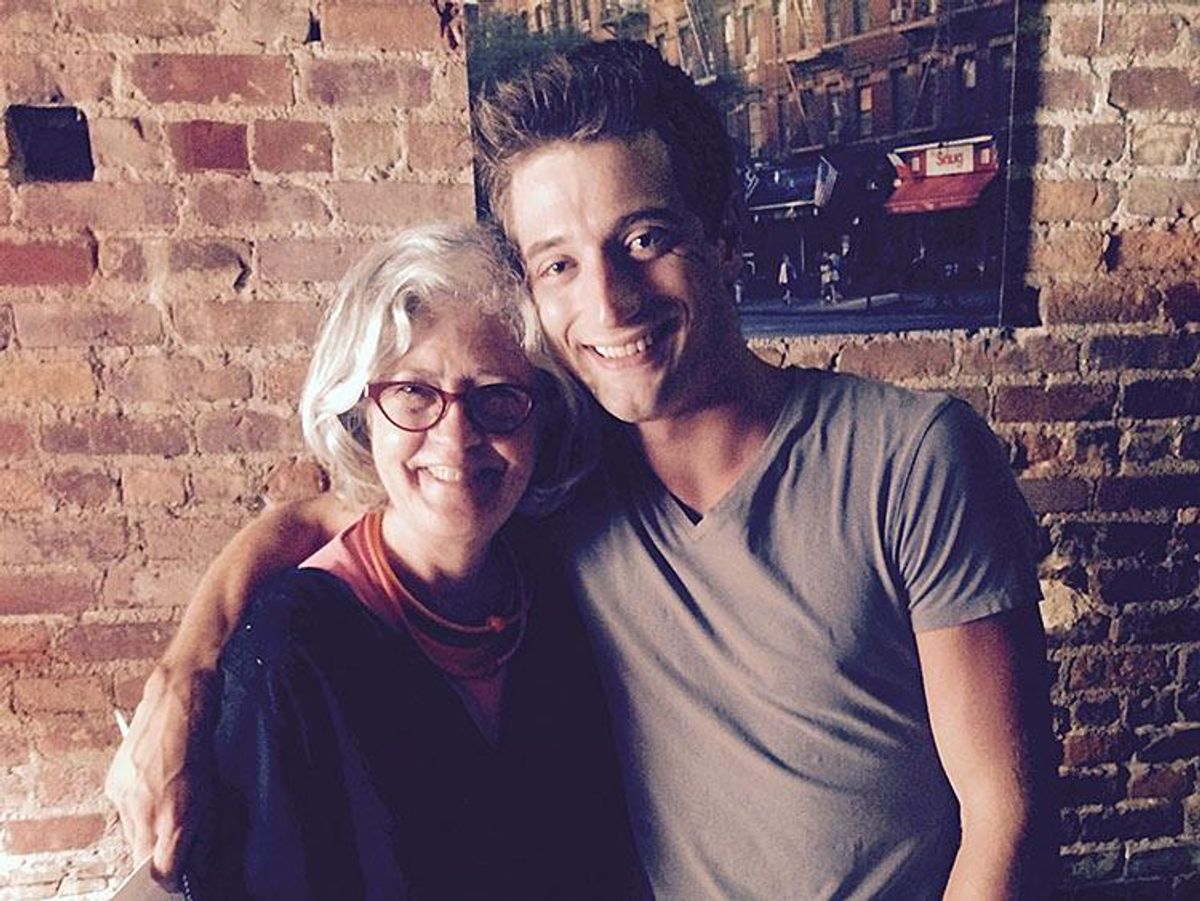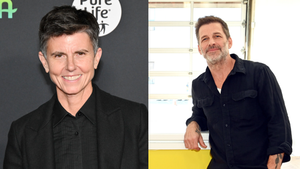Public health administrators don’t usually work with porn stars. They’re more likely to view adult film stars as vectors of infectious disease than collaborators in the fight against the spread of HIV.
But Dr. Mary Ann Chiasson isn’t your typical epidemiologist—and neither is the PrEP public awareness campaign she’s helped launch. The first spot in the "HIV iS STILL A BIG DEAL" video-based Time2PrEP program features adult film star J.D. Phoenix taking off his shirt, kissing another man, taking PrEP, and saying, “I like to be safe.” (Watch it here.)
An epidemiologist, Chiasson has been on the front lines of the fight against HIV for longer than Phoenix has been alive. After many years with the New York City Department of Health, she’s currently Vice President for Research and Evaluation at Public Health Solutions, one of the country’s largest public health institutes. She also teaches at Columbia University where she has co-directed the Mailman School of Public Health course, Epidemiology of HIV/AIDS, since its founding in 1989.
Plus recently spoke to Dr. Chiasson about the Time2PrEP campaign, the early days of HIV, the "Lazarus effect" of antiretroviral therapy, why she still advocates condom usage, calls PrEP a "gateway drug" (it's not what you think), and her concerns as we enter the fourth decade of the HIV epidemic.
How long have you been working in the field?
I started graduate school in 1983, in the early stages of the epidemic. You can imagine the intense interest that people in public health had especially those of us in infectious diseases. I started at the [New York City] health department in June of 1986, just one year after the first HIV antibody test was approved by the FDA. This was the first tool to become available to identify those infected with HIV before they developed AIDS.
Is that when HIV became the main focus of your research?
When I joined the Health Department in 1986 it was already clear that New York City was an AIDS epicenter with a rapidly expanding epidemic particularly among men who reported sex with other men and injection drug users. It was known that the virus was transmitted through sex, receipt of blood and blood products, and from mother to baby. However, the number of people infected was unknown. Learning who was HIV infected and how fast the virus was spreading were the first steps in developing effective HIV prevention programs. Knowing that HIV was sexually transmitted, CDC [the Centers for Disease Control and Preventon] funded the Health Department to do one of the first studies in the country to find out how common HIV infection was in patients attending one of the Sexually Transmitted Disease clinics operated by the Department of Health. My first task when I started working as an epidemiologist in AIDS Surveillance at the Health Department was to help Dr. Rand Stoneburner write the grant application for the study. We had no idea how many people with HIV we would find. It turned out that 7.5 percent of the patients attending the clinic were infected and none of them knew it.
Did you work in hand with the CDC?
Yes, the health department has worked closely with the CDC throughout the epidemic. The first HIV prevalence study that we did was sponsored by the CDC and was conducted in collaboration with them.
Recently there’s been a huge spike in new infection rates, especially among 18-25 year old gay males. Where do you think things went wrong in terms of messaging?
That’s really a great question. One of the most disturbing things to me as someone who has been working in this epidemic for a long time, is that we have the same number of new infections year, after year, after year. Gay men make up more than 60 percent of the new infections…the only risk group in which infections have increased over time. When we first started doing internet research on sexual behavior in gay men in 2002, we were astonished to see that sexual behavior looked a lot like it did in the 1980s.
The number of newly diagnosed HIV infections have remained fairly constant at about 50,000 per year for nearly a decade. However, while HIV infections in injecting drug users and heterosexuals have decreased, infections among men who have sex with men have increased and now account for more than 60 oercent of all new infections in the U.S.. The greatest increase was in young MSM [men who have sex with men] 13-24 years of age.
Do you think it has anything to do with the way some have started thinking of HIV as no big deal, they'll just take a pill a be perfectly healthy?
Partly that and partly it’s due to how effective therapy is. I think there were many people in the public health community who were very concerned by the early ART advertising campaigns. But it makes sense if you were there in the late 90s to see people recover who were almost dead, it was a miracle. People called this the Lazarus effect, and it really was. It is hard to overestimate the joy that followed widespread availability of ART. It became clear really quickly that HIV was no longer a death sentence.
The problem now is that men are complacent. I’ll just take a pill if I get HIV. Meanwhile, other sexually transmitted infections are surging in the gay community. Condoms are certainly not perfect but necessary. Without them. what’s going to happen when the next HIV comes along and people have not changed their behavior?
Have you found anything to be more effective or less effective in terms of messaging?
There is no single message that will reach everyone. Some people respond to scare tactics, some to humor, and some to educational messages. It’s really hard, and for exactly the reason that you’ve said. I’m a scientist and I look at the numbers, and I look at the behavior, and I try and divorce myself from any kind of judgmental actions. But factual statements are often misinterpreted and people get really angry when you say that “this is high risk behavior, you are at high risk." The bottom line is that we need as many different kinds of messages delivered in as many different settings as possible.
And when you’ve finally reached one generation, a new generation comes along that has to relearn it all again.
Yes. I have taught the HIV/AIDS epidemiology course at Columbia‘s Mailman School of Public Health for the past 26 years. Now most of students in the class grew up at a time when effective anti-retroviral therapy was already available. A couple of weeks ago we showed And The Band Played On to help them better understand the early years of the epidemic. You have to rewrite the curriculum for every new generation.
What do you think of the AIDS Health Foundation misinformation campaign around PrEP and how Michael Weinstein has slut shamed so-called “Truvada Whores?” (Read more about Weinstein and AHF's issues here)
ChiassonI think it’s a tragedy. Not only can PrEP prevent HIV transmission but it’s being described as a gateway drug, because it gets users into medical care. In order to get PrEP, you have to have an HIV test, you have to see a physician and you have to see a physician every three months, and get tested for STDs. It gets those who are high risk into medical care, and talking to professionals about HIV prevention which is incredibly important.
We all have a status and the notion of us all being HIV equal helps fight HIV stigma, but is iit overly simplistic? HIV is still a disease we want to prevent.
That’s a tough one because stigma has played a big role in HIV transmission for many reasons. It’s really complicated and I agree with you. I will go back to the name of our campaign, "HIV is still a big deal." Stigma is a terrible thing because of the pain it causes and because it makes people hide things. For me the bottom line is, people who are HIV positive have an obligation to disclose their status to their sex partners before sex. I think disclosure is key, to controlling the epidemic. HIV testing is also key. There are also data showing that transmission is occurring, among people who do not know they are infected
In the J.D. Phoenix spot, he says, "I like to party," which may appeal to party boys but has been criticized by others. Even if you think that kind of lifestyle is high risk, don't we sometimes have to go there? Reach people where they already are?
I have lost some sleep over it, but I have to say that I think that you need multiple messages. One message it not going to reach everybody and if you want to prevent HIV transmission, the message has to reach those at greatest risk. Harm reduction is an important part of HIV prevention.
Is there anything else you want to add?
I just want to say one last thing. Part of the reason I have been so interested in working with gay men for nearly 30 years is that when I started at the health department, early in the epidemic, I got to know so many gay men that worked there, and so many men who died. You don’t forget that, these young, wonderful, committed men. To watch them get sick, sometimes so quickly was heartbreaking--you don’t forget.
Read more about the campaign as well as interviews with JD Phoenix, Kenny Shults, and Michael Lucas.








































































